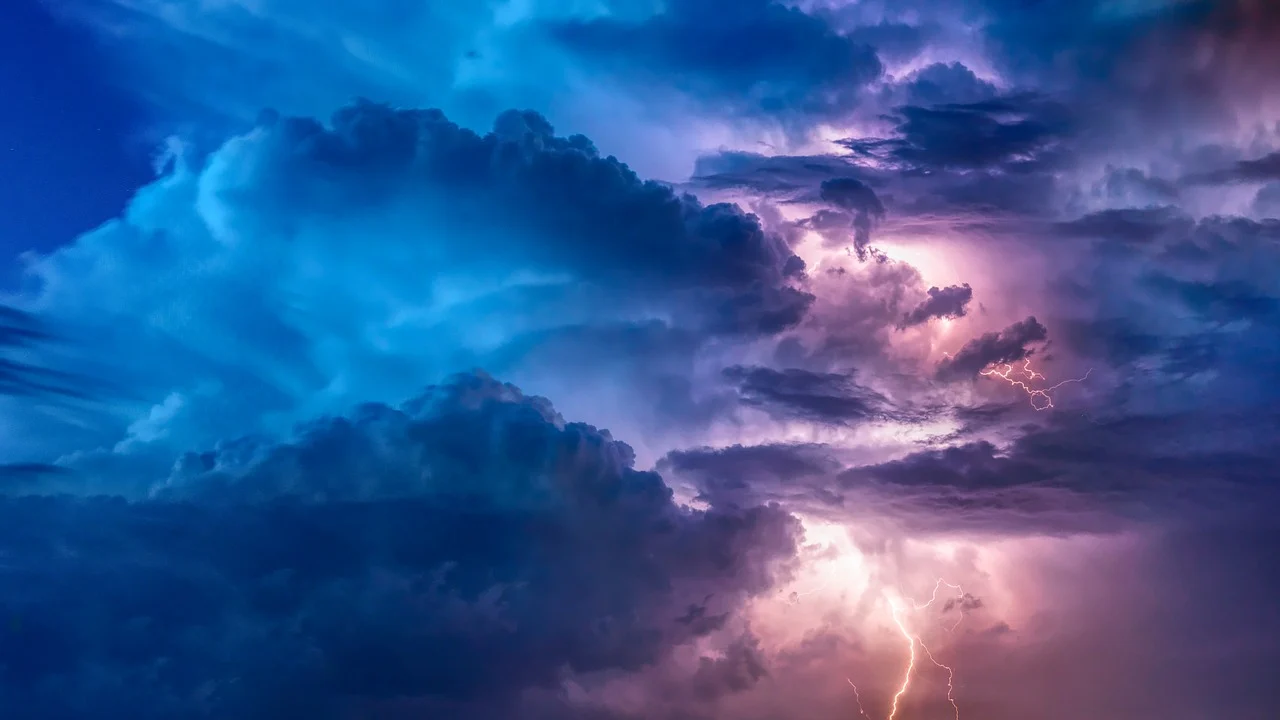AP Environmental Science ♻️
252 resourcesSee Units
Multiple Choice Practice for Earth Systems and Resources
Welcome to Unit 4 AP Environmental Science Multiple Choice Questions! Grab some paper and a pencil 📄 to record your answers as you go. You can see how you did on the Unit 4 Practice Questions Answers and Review sheet once you're done. Don't worry, we have tons of resources available if you get stumped 😕 on a question. And if solo study is not your thing, join a group in Hours!
Not ready to take a quiz yet? Start studying unit 4 Here: Intro to Unit 4

Image from Pixabay
Storms are caused by energy from solar radiation generating temperature differences in air and water.
Facts about the test: The AP Environmental Science exam has 80 multiple choice questions and you will be given 1 hour 30 minutes to complete the section. That means it should take you around 17 minutes to complete 15 questions.
*The following questions were not written by CollegeBoard and although they cover information outlined in the AP Environmental Science Course and Exam Description the formatting on the exam may be different.
1. The idea that Earth's lithosphere is divided into plates that move is the theory of
A. Relative gravity
B. Plate Tectonics
C. Entropy
D. Plate Boundary Separation
2. The very high temperature in the core of the Earth is from
A. Friction
B. Ultraviolet radiation
C. Radioactive decay
D. Combustion
3. Areas with seafloor spreading, volcanoes and rift valleys are most likely
A. Strike Slip boundaries
B. Transform boundaries
C. Convergent boundaries
D. Divergent boundaries
4. The removal of rock from one area to another is the process of
A. Erosion
B. Weathering
C. Sedimentation
D. Carving
5. What feature of soil can affect its porosity and permeability?
A. Chemical composition
B. Particle size
C. Location in the horizon
D. Depth
6. Identify the correct statement about plant roots and the type of weathering they may cause.
A. Only physical weathering
B. Only chemical weathering
C. Both physical and chemical weathering
D. Neither physical or chemical weathering
7. When looking at soil layers or horizons, the topsoil is found in the
A. A horizon
B. B horizon
C. E horizon
D. R horizon
8. When looking at soil layers or horizons, the bedrock or parent material is found in the
A. A horizon
B. B horizon
C. E horizon
D. R horizon
9. The layer of the atmosphere where weather occurs is the
A. Thermosphere
B. Mesosphere
C. Stratosphere
D. Troposphere
10. The layer of the atmosphere where the ozone layer is located
A. Thermosphere
B. Mesosphere
C. Stratosphere
D. Troposphere
11. Weather events like hurricanes spin clockwise in the northern hemisphere and counterclockwise in the southern hemisphere due to the
A. Coriolis effect
B. Tilt of the earth on its axis
C. The difference in longitude
D. Seasonal change in expose to UV radiation
12. The entire area of land that a river drains is known as its
A. Watershed
B. Deadzone
C. Groundwater
D. Estuary
13. The highest amount of solar radiation is directed to
A. The polls
B. The temperate regions
C. The equator
D. Different areas depending on the season
14. El Nino is associated with
A. Colder ocean water on the west coast of the Americas
B. Warmer ocean water on the east coast of the Americas.
C. Colder ocean water on the east coast of the Americas
D. Warmer ocean water on the west coast of the Americas.
15. Identify a statement talking about the climate of a region
A. The south west is a desert
B. It should rain all day tomorrow.
C. The last 10 winters have been mild and there was no snow.
D. Every 4 years there is a El Nino event and often there is flooding in California.
Browse Study Guides By Unit
🏜Unit 1 – The Living World: Ecosystems
🐠Unit 2 – The Living World: Biodiversity
👪Unit 3 – Populations
🌏Unit 4 – Earth Systems & Resources
🏖Unit 5 – Land & Water Use
⚡️Unit 6 – Energy Resources & Consumption
💨Unit 7 – Atmospheric Pollution
♻️Unit 8 – Aquatic & Terrestrial Pollution
🔥Unit 9 – Global Change
🧐Multiple Choice Questions (MCQs)
✍️Free Response Questions (FRQs)
📆Big Reviews: Finals & Exam Prep

Fiveable
Resources
© 2023 Fiveable Inc. All rights reserved.